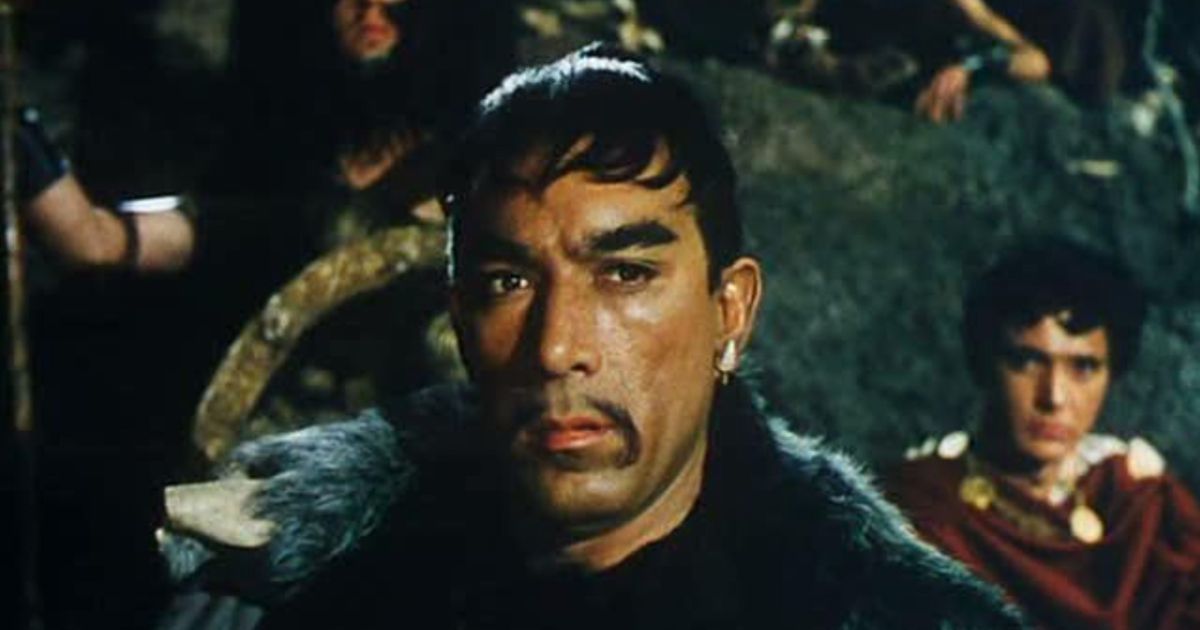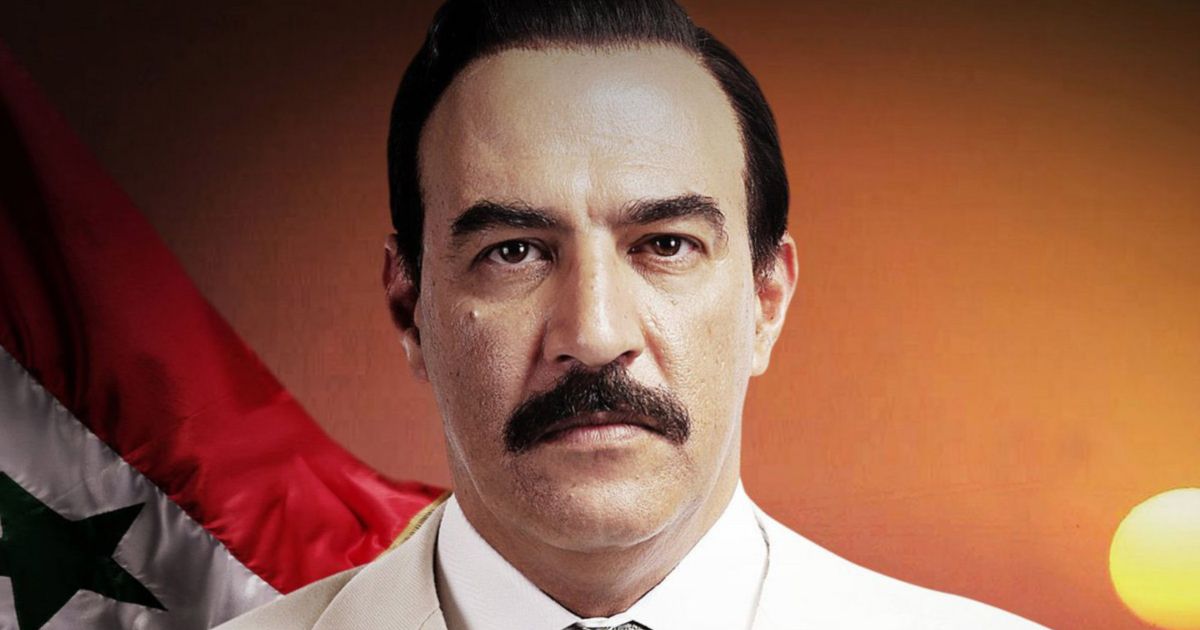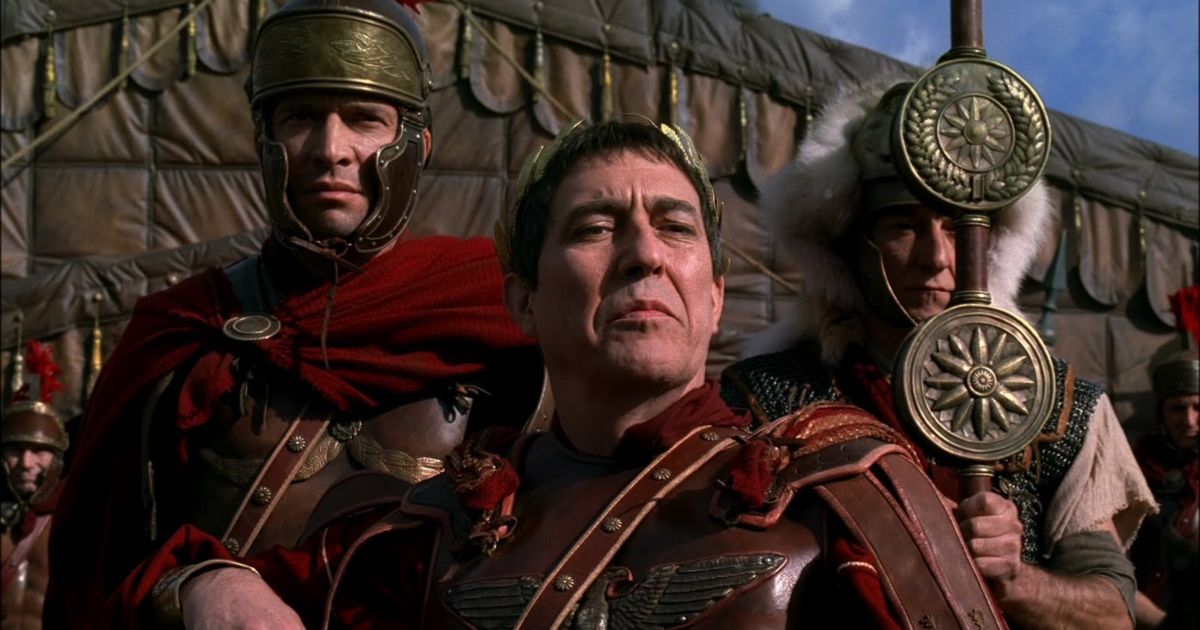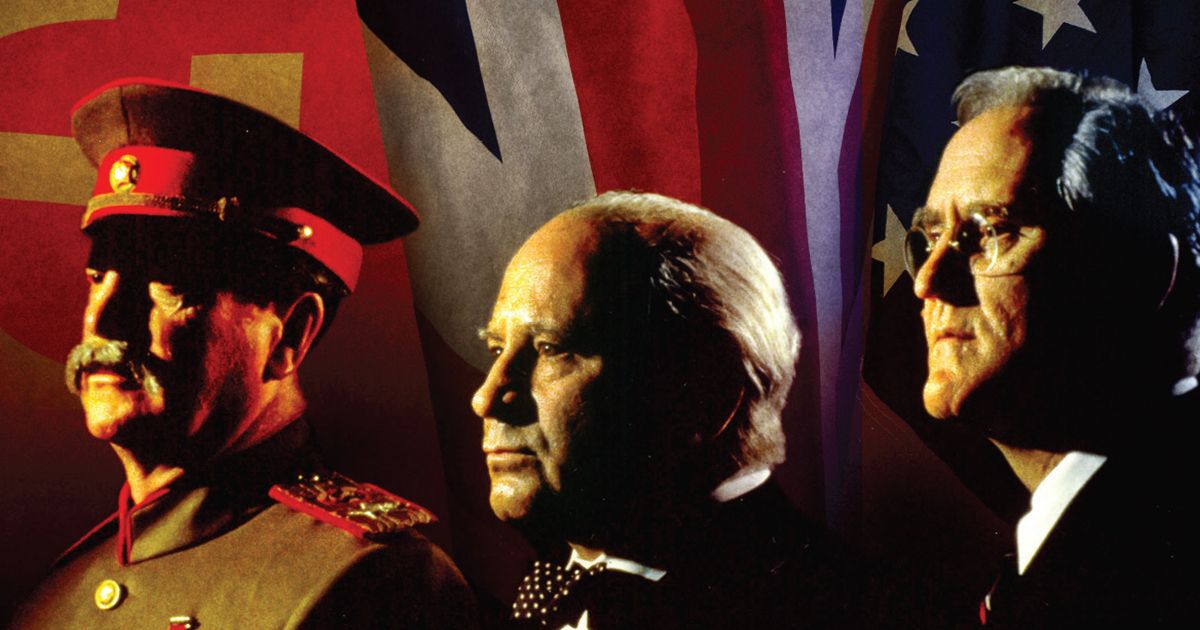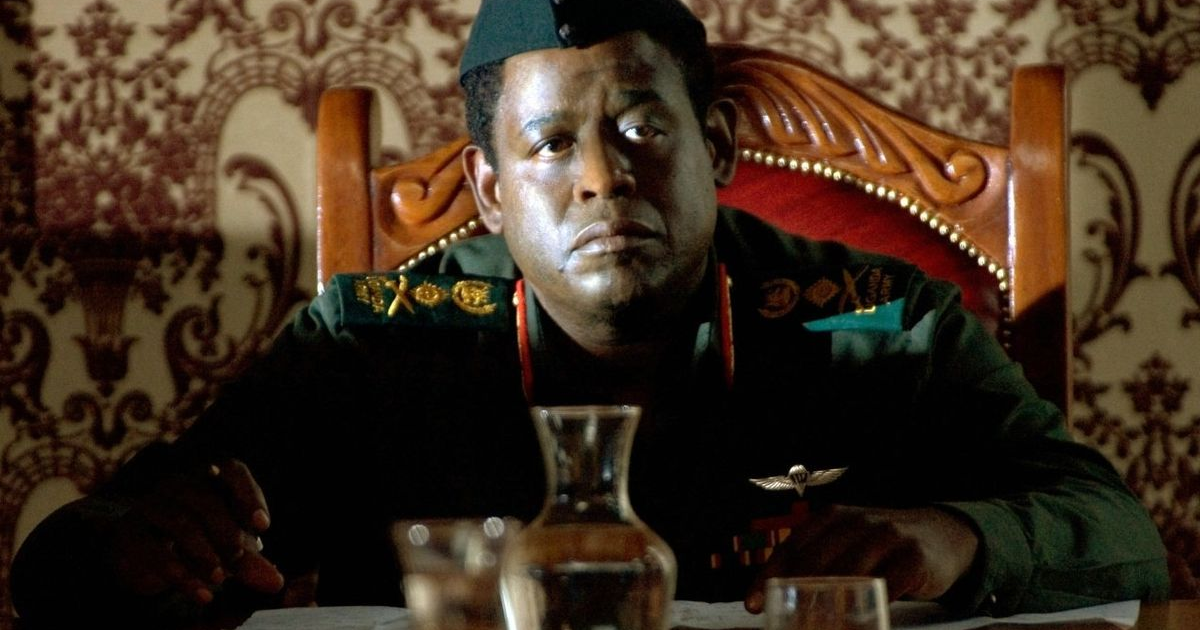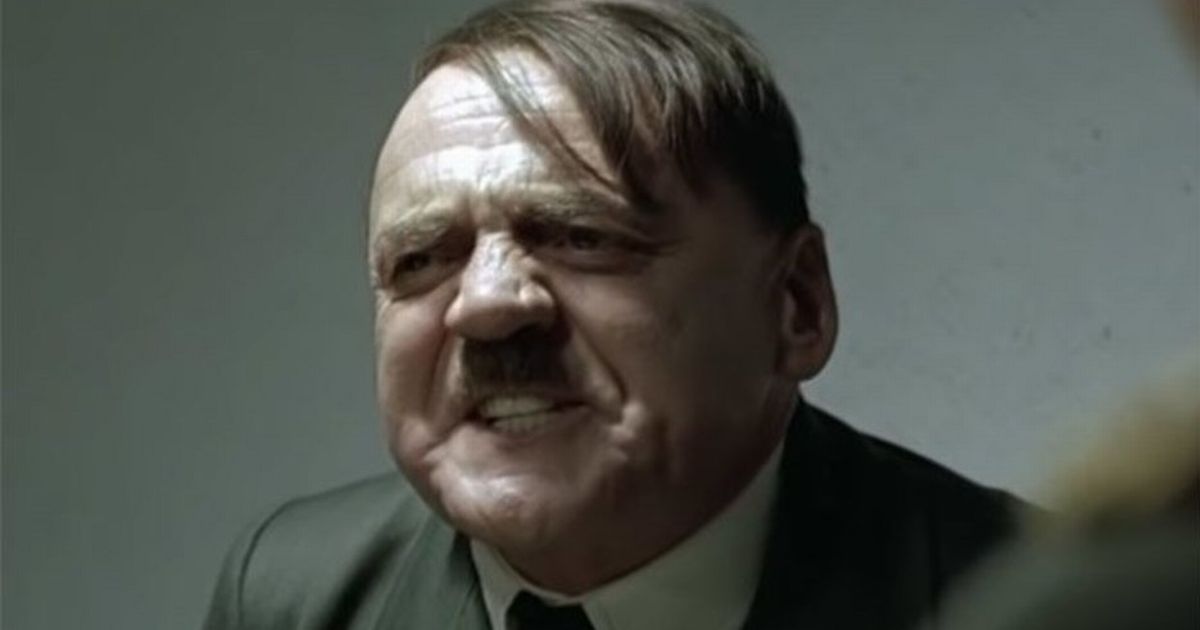Dictators, Tyrants, Warlords: leaders lacking morality and the urge for bloodshed have many names. Throughout history, these men have overthrown governments, committed atrocious war crimes, human rights abuse, and even committed mass genocide, some to the point of drastically altering the population of an entire race or nationality of people.
There is a great deal of historical fiction in cinema and television and numerous portraits of some of the most infamous and studied of these monsters, but not all portrayals are accurate. We will be looking at not necessarily the best and most precise historical films or Tv series, or the best performances by an actor, but the movies or series that showcase one of these warlords with the most historically accurate depiction of their character.
From Alexander the Great to Hitler, here are eight of the most historically accurate portrayals of a warlord in a movie or tv series.
8 Napoleon – Napoleon
Napoleon (1927), directed by Abel Gance, was made towards the end of the silent film era. It is a daunting five and a half hours long. There have been a handful of movies made about Napoleon, but if you want to get a good look at what Napoleon (Albert Dieudonné) was like, this is your stop. He is considered one of the most ambitious political leaders and military commanders and is responsible for the Napoleonic wars, which took place from 1799-1815.
Napoleon was a polarizing figure and still is, depending on how you look at him, he could be a good guy, a bad guy, or a good guy who did terrible things; there is a lot of complexity to who he was and what he did. The director idolized Napoleon, and many out there would argue that the world, or at least France, is better because of him. He built one of the most massive empires in Europe since the Romans, but this was done with much bloodshed.
Although the film may be a little biased, it is worth watching due to the detail put into who Napoleon was by a director passionate about his history. Whether he was a tyrant or not, you’ll have to decide for yourself. But no matter his justifications for what he did, he was a warlord and an empire builder whose Napoleonic wars resulted in around 3.5 million to 6 million lives lost.
7 Alexander the Great – Alexander: The Ultimate Cut
Alexander: The Ultimate Cut (2004) directed by Oliver Stone, follows the king of Macedonia, Alexander III (Colin Farrell), from childhood to his final moments in Babylon. While the film is more Hollywood than most historians would like, and there was major criticism of Farrell’s performance, the movie’s depiction of Alexander the Great is accurate. The fact that Alexander is a movie and not a TV series, even with the original film nearly three hours long, is still nowhere near enough to thoroughly cover the scope and magnitude of Alexander the Great’s life and impact. The movie does a great job of showing a troubled king. The history books often depict him as one of the greatest military commanders.
The truth is the word “great” is deceptive. Although he is defined as having intentions to unite Eastern and Western civilizations, and he is touted for his success of being undefeated, all of this also holds the reality that an unknown, but monumental number of people died under the rule of Alexander the Great. He was, without a doubt, a warlord hell-bent on conquering, no different from anyone else on this list.
There is something unique that happened with this film. The first release, Alexander, was a disaster, with horrible reception. There were even two more versions made after that, but they fell short as well; interestingly enough, with some massive restructuring and added footage Oliver Stone released a fourth version called Alexander: The Ultimate Cut.This version of Alexander was so much better even movie critic for Roger Ebert’s website Peter Sobczynski stated that “The various expansions and rejiggering have improved it immeasurably, and what was once a head-scratching mess has reformed into an undeniably fascinating example of epic cinema….the boldness of both the film and its creator can finally be fully appreciated.” So, the extra runtime in Alexander: The Ultimate Cut is worthwhile if you want to watch this film and get the most out of it.
6 Attila the Hun – Attila
From the Eurasian steppes, Attila led the Huns toward Eastern Europe, bringing a ruthless onslaught of death and destruction from 441 to 453. Attila was quite the craze in 1954 as two films were made: Sign of the Pagan and Attila, (1954) directed by Pietro Francisci. In comparison, it is hard to dispute which is more accurate as they are both similar approaches worth watching. Both are set in 450 and tell the story of the brutal Hun’s tidal wave of destruction across the West.
There was a miniseries in 2001, but it got a lot historically wrong, such as the characters, events, and costumes; they even have Attila visiting Roma, but there is no documentation that this ever happened. In Attila, it more accurately ends with Attila (Anthony Quinn) being turned away by Pope Leo from making his conquest of Rome. Attila is possibly slightly more accurate than Sign of the Pagan because it is more refined in its depiction of Attila, as he is seen as not just a brute.
This is not to take away from the fact that he was horrible, being called the “Scourge of God” by the Romans. Historically, Attila’s brother was not alive during the film’s events. Still, they did have him in the movie, but this made for good contrast as Attila appears as a genuine warmonger when compared to his peaceful brother Bleda.
5 Saddam Hussein – House of Saddam
House of Saddam (2008) is a television miniseries that followed Saddam Hussein’s (Igal Naor’s) rise to power and inevitable fall. In September 1980, Saddam invaded Iran, starting the Iran–Iraq War. Saddam was a tyrant and was accused of countless human rights abuses. These acts include but are not limited to torture, state terrorism, genocide, ethnic cleansing, rape, assassinations, chemical warfare, and much more.
There is no sure answer to how many died from his tyranny, but it is estimated around 250,000. The show received mixed criticism regarding its content. House of Saddam stays true to its name, primarily focusing on what goes on within Saddam’s household and closest allies, staying away from explaining the grandeur of what he did and how he negatively altered and molded a nation. However, critics could agree that actor Igal Naor depicted the warlord exceptionally well, showcasing just how much of a narcissist and madman he was.
4 Julius Ceasar – Rome
Rome (2005) does not entirely revolve around Julius Ceasar as he is in 13 of the 22 episodes, but this Tv series depicts Caesar remarkably well. The show is about two Roman soldiers who experience historical events in the era of well-known figures like Mark Antony, Gaius Octavian, Cleopatra, and Julius Caesar (Ciarán Hinds). Much like Alexander the Great, Caesar is regarded as brilliant, with a great deal of praise for him. Still, he was responsible for the loss of many lives, particularly in the Gallic wars, where his primary conquest was for glory and riches.
It is speculated that under Ceasar’s command, his troops killed up to 1,000,000 Gauls and sold approximately 1,000,000 into slavery. He was an astonishing and skilled military commander and politician, but also, undoubtedly, a warlord. There is even a book about him, titled Julius Caesar: Rome’s Greatest Warlord, by award-winning historian Dr. Simon Elliott. Like most historical recounts taken on by Hollywood, there is a great deal that is not accurate, primarily due to a bit of poor research but mostly time constraints and the need to be sexy and fun enough to draw in an audience. It’s sad, but it is how it goes. In Rome, the portrayal of Cesar in particular as a vain man is depicted better than most. They also exemplify his skill as a public speaker and cunning as a politician exceptionally well.
3 Joseph Stalin – World War ii When Lions Roared
World War ii When Lions Roared (1994) is an extensively researched two-part miniseries that depicts Churchill, Roosevelt, and Stalin (Michael Caine) navigating through major affairs and incidents during World War II. The focus is on these significant leaders and their strategies. Although trying to team up with who will soon be his enemies after the war, Stalin is on their side as the Soviet Union is trying to win their fight against Nazi Germany.
Stalin was a ruthless dictator who had millions of his Soviet citizens executed and much more deported, detained, interrogated, and put into forced Labor. It was Lenin who created the GULAG, which is a labor camp, but Stalin was the one who put them into effect. He also ordered “The Great Purge,” which was designed to remove rivals of the communist party. Like everyone on this list, Stalin did so much more, but it is too much to recount. The film does not go into these atrocities, but there is wartime panic and discussions with other leaders, and the movie gives a good look at who he was. Michael Caines’s performance is phenomenal, and he was nominated for a Primetime Emmy for Outstanding Lead Actor in a Miniseries or a Special.
2 Idi Amin – The Last King of Scotland
The Last King of Scotland, (2006) directed by Kevin Macdonald, was adapted from the novel of the same name, which illustrates the brutal dictatorship of Idi Amin (Forrest Whitaker), the Ugandan President, from 1971 to 1979. The audience experiences this critical analysis of the warlord through the eyes of a fictitious Scottish doctor (James McAvoy). In 1971 the then Ugandan president Milton Obote was at a conference in Singapore. Idi Amin took this opportunity, staged a military coup, and took over as president and the chief of the armed forces.
Although some of the film is fictional, the doctor is based on a real person, and many of the events and the portrayal of Amin are highly accurate. He was considered one the most brutal dictators in history, which is depicted accurately in the film. It is estimated that under Amin’s rule, around 300,000 to 500,000 people were killed and or tortured, earning him the title of the “Butcher of Uganda.” Forrest Whitaker did an exceptional job portraying the mad president, winning him the Academy Award for best performance by an Actor in a Leading Role.
1 Adolf Hitler – Downfall
Downfall, (2004) directed by Oliver Hirschbiegel, is one of the most intimate and detailed analysis of Hitler (Bruno Ganz) and the Third Reich during their final days. There’s no need to draw much attention to the commonly known atrocities Hitler committed. He is, without debate, the worst war criminal to ever live. What alludes common knowledge and is still debated among some conspiracy theorists is how it all ended for the Führer.
The film takes place during the sixth and final year of the war, where we see Hitler becoming increasingly unraveled and deranged. He was convinced his capture was inevitable, and ultimately, this led to his suicide in an underground bunker in Berlin. The film does an impeccable job of depicting Hitler primarily because it is based on Gertraud “Traudl” Junge’s book Bis zur letzten Stunde, which was published in English as Until the Final Hour. Traudl Junge was Hitler’s last secretary, and the book is a memoir of the last days of Hitler and his reign, making this story incredibly historically accurate, and one of the best WWII movies ever made.
This story originally appeared on Movieweb



